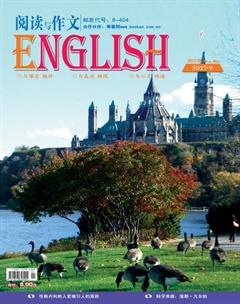美国宗教
Diversity is the main feature of religion in the United States. Although Christi anity has always been the major American faith, the existence of more than 250 different religious sects here has made Americans tolerant of all forms of worship—Christian and non-Christian.
Maybe this tolerant attitude to different religions can be traced back to the early settlers of this country. Among the first immigrants, quite a number of them were Puritans, whose purpose of coming to this New World was to pursue religious freedom, to practice their religion and worship God as they wished. This is why the nations forefathers demanded legal guarantees of religious freedom. So the First Amendment to the Constitution not only forbids the establishment of an offical national religion but also forbids state or federal interference with religious institutions or practices.
Now, about 60 percent of Americans are attached to a particular church. Of these, about 95 percent are Christians and nearly 5 percent are Jews. Only a very small number of Americans belongs to other faiths. About 58 percent of church-attached Christians are Protestants. And American Protestantism is divided into more than 200 different sects. The major Protestant groups are the Methodists, Baptists, Lutherans, Presbyterians, and Episcopalians.
The combined Protestant sects form the largest religious faith in the United States, but Roman Catholicism is by far the largest unified religious body. About 48 million Americans are baptized members of Catholic congregations. As many Catholics send their children to religious schools, Catholic funds have built thousands of elementary and secondary schools, as well as many fine colleges and universities. Catholics have also played an important role in American politics.
The third biggest religion in the United States is Judaism. During the Sabbath, which is from sundown Friday until sundown Saturday, Orthodox Jews neither ride nor conduct business. Jewish tradition has certain dietary rules, forbidding pork and certain seafoods and forbidding the serving of milk products as meals. Nevertheless, reform Judaism does not follow these rules.
Although in the United States religion provides the customs and ceremonies that mark lifes most important events—birth, coming of age, marriage, and death, religion has declined in importance in terms of influencing behavior and mind. When Americans need personal advice, they usually turn to psychologists or to professional counselors rather than to religious leaders for help. The twentieth century has often been called a secular age, and certainly it is in the U.S.A. Belief in a personal God, concern for Gods judgement of ones behavior, and concern about the afterlife seem to be declining. They are more interested in improving their life on earth. And they have a strong faith in their ability to improve conditions through their own efforts, which probably originated from Benjamin Franklin who had said, “God helps them that help themselves.”
But, of course, religious view varies quite a bit depending upon ones age group, social class, degree of education, and region of the country. The rising rate of interfaith marriages suggests that religious differentces are less important to the younger generations than to their parents generation. Religion seems to have a greater emotional grip upon the poor and uneducated than upon the rich and educated. In the southern part of the country, believers attitudes towarding religion are more traditional than those in the rest of the nation.
Probably influenced by the non-traditional religious fervor of the young Americans, people in churches throughout the country are now adopting new kinds of religious services. Just like what is shown in the well-known film Sister Act, people are using popular media of expression—jazz, rock, and folk music, folk dancing and modern dancing, contemporary art and poetry, and even plays and movies. These new services have offended some traditionalists. But many people respond strongly to find that prayer need not be just mindless repeat of words and music from past centuries. The reality is that many of these progressive churches draw crowds to their weekly services, while more traditional ones are half-empty.
美國宗教的主要特点就是多样化。虽然基督教一直是美国人的主要信仰,但还存有250多种其他宗教派别,这使美国人包容各种各样的信仰——不论它是基督教或是非基督教。
这种对宗教的宽容态度也许能够追溯到早期殖民地时期。在最早的移民中,清教徒占很大的比例,他们来到这个新世界就是为了追求宗教上的自由,以自己的方式来实行他们的宗教和敬仰上帝。这就是为什么这个国家的祖先们要求从法律的角度来保证宗教的自由。美国宪法的第一次修订案中就规定,禁止成立任何正式的、全国性宗教,并禁止州或联邦对宗教机构和宗教行为进行任何形式的干涉。
现在,大概有60﹪的美国人与某个教堂有联系。而在他们当中,95﹪属于基督教,近5﹪是犹太人,只有少数的美国人信仰其他宗教。在与教堂有联系的人中,大约有58﹪的是新教。而美国的新教有分成200多个分支,最主要的新教派别为:循道宗教、浸礼会教派、路德教派、长老会教派和主教制信奉者教派。
虽然各派新教综合起来形成了美国的主流宗教,但是罗马天主教是美国最统一的宗教团体。美国有4800万个是受洗礼的天主教徒。由于许多天主教徒把他们的孩子都送进了教会学校,所以,天主教基金会建起了几千所小学、中学和很不错的学院和大学。而且,天主教成员在美国政治舞台上也起着突出的作用。
美国的第三大宗教是犹太教。在安息日期间(即从星期五的日落到星期六的日落),正统的犹太教信徒既不驾车,也不做生意。此外,犹太教的传统中还有一些饮食上的禁律,比如禁食猪肉和某些海鲜,禁止把牛奶制品作为餐桌上的食品等等。不过,犹太教的改革派却不受这些清规戒律的约束。
虽然,宗教仍存在于美国人一生中重大事件的习俗和庆典中——如出生、成年、结婚和死亡,但它对人们行为和思想上的影响已成为日落西山之势。美国人想听取个人忠告时找的不是神父,而是心理医生和职业咨询者。二十世纪是一个世俗的世纪,就美国而言,也当然是如此。信仰个人的上帝、关心上帝对自己行为的审判、关心来世——所有这些似乎都在消失。人们感兴趣的是如何提高在现实中的生活,他们坚信有能力通过自己的努力来改善处境。这种信念也许来源于本杰明·富兰克林,因为他曾说过:“上帝帮助那些帮助自己的人。”
当然,由于人们在年龄、社会阶层、教育程度和地理区域的不同,他们的宗教观念也不一样。不同信仰的人之间的通婚率在增加,这反映了年轻一代人已不再像他们的父母那样看重信仰上的不同。相比之下,贫穷而未受教育的人比富有而受过教育的人对宗教的感情更深一些;南方地区的教民对宗教的态度比其他地区的人要更加传统一些。
也许受年轻人那种非传统宗教热情的影响,美国各地的教堂都在逐渐接受新的宗教形式。就像著名电影《修女也疯狂》里所反映的那样,人们在使用通俗的表达方式——爵士、摇滚和通俗音乐,民间舞蹈和现代舞蹈,现代艺术和诗歌,甚至戏剧、电影等各种形式。这些新形式冒犯了一些传统人士,但许多人却对此反应强烈,因为他们发现,祈祷的形式其实并非一定是几个世纪来对同样文字和音乐的盲目重复。事实上,这些进步的教堂吸引了成群的人们来参加他们每周组织的宗教活动,而在那些传统保守的教堂里,半数的位子却空着。

